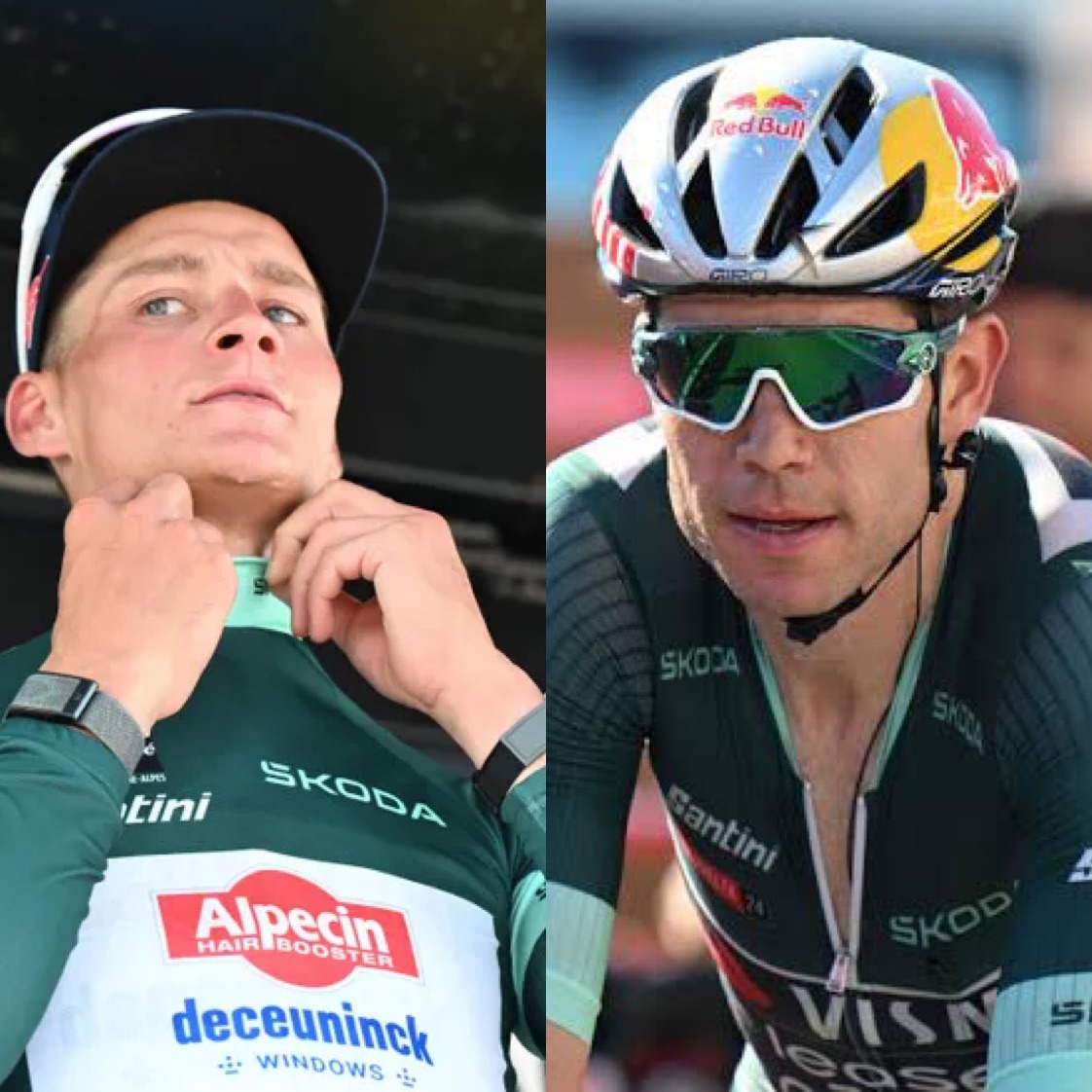**Tadej Pogačar Gives Up the Yellow Jersey After the Second Stage of the Critérium du Dauphiné: Can He Recover It?**
The world of professional cycling is often defined by dramatic shifts in leadership, unexpected turns, and strategic gambles that keep fans on the edge of their seats. One such recent event that has stirred considerable discussion among enthusiasts and analysts alike is Tadej Pogačar’s decision to relinquish the yellow jersey after the second stage of the Critérium du Dauphiné. This development raises a pivotal question: can he mount a comeback and reclaim the race leadership? Let’s delve into the details of what transpired, analyze the implications, and explore whether Pogačar’s prospects for redemption are realistic.

The Context: The Critérium du Dauphiné and Pogačar’s Expectations
The Critérium du Dauphiné is widely regarded as a key preparatory race for the Tour de France, often serving as a testing ground for contenders and a barometer of form. Tadej Pogačar, the reigning Tour de France champion and one of the most talented climbers and all-rounders in the peloton, entered this year’s edition with high hopes of fine-tuning his condition and asserting his dominance.
Leading up to the race, Pogačar’s performances in training and earlier races suggested he was in top shape. His previous successes, including multiple Tour de France victories and stage wins at major events, cemented his reputation as a formidable competitor. Fans and experts anticipated a strong showing, especially in the mountainous stages that are crucial in shaping the general classification (GC).
The Second Stage and the Loss of the Yellow Jersey
The second stage of the Dauphiné was characterized by challenging climbs, strategic attacks, and intense competition among the top GC contenders. It was during this stage that Pogačar faced a decisive moment.
**What happened during the stage?**
– **The Attack:** A strong breakaway formed early, with Pogačar initially marking the move but not responding immediately. As the stage progressed, a select group of climbers, including other GC favorites, launched attacks on key ascents.
– **Pogačar’s Response:** Pogačar attempted to bridge the gap but lacked the necessary support or the right timing. Despite his efforts, he was unable to close the gap to the leaders, ultimately falling behind.
– **The Decision to Abdicate the Jersey:** Recognizing that his efforts to regain time were unlikely to succeed and perhaps prioritizing race strategy, Pogačar made the strategic decision to relinquish the yellow jersey. This move was both a tactical decision and a display of sportsmanship, acknowledging the strength of his rivals and the dynamic nature of stage racing.
**Implications of this move:**
– He no longer holds the leader’s jersey but remains a significant contender.
– The race has become more open, with new GC leaders emerging.
– Pogačar’s team may be adopting a different strategy moving forward, possibly focusing on stage wins or supporting a different rider.
The Psychological and Strategic Dimensions
Deciding to give up the yellow jersey mid-race is never an easy choice, especially for an athlete of Pogačar’s caliber. It involves weighing the immediate race situation against long-term goals.
**Psychological factors:**
– **Maintaining focus:** Sometimes relinquishing the leader’s jersey can relieve the pressure and allow a rider to race more freely.
– **Motivation:** Recognizing the strength of rivals can motivate a rider to conserve energy for key moments later in the race.
– **Resilience:** The ability to recover from setbacks is crucial, especially in stage races where race dynamics evolve rapidly.
**Strategic considerations:**
– **Team tactics:** Pogačar’s team might have decided that supporting another rider or focusing on stage wins is more advantageous.
– **Race dynamics:** The overall difficulty of upcoming stages, particularly mountain stages and time trials, influences decisions on whether to chase the GC or focus on specific stages.
Can Pogačar Recover the Leader’s Jersey?
This is the central question that fans, commentators, and analysts are debating. While losing the yellow jersey early in a stage race might seem like a setback, history shows that such situations are far from hopeless.
**Factors supporting a potential comeback:**
1. **Experience and Resilience:** Pogačar’s track record demonstrates his exceptional ability to bounce back from adversity. His mental toughness and race intelligence have repeatedly been showcased in high-pressure situations.
2. **Stage Race Dynamics:** Grand Tours and week-long stage races are inherently unpredictable. Breakaways, time gaps, and strategic attacks can dramatically alter the GC standings.
3. **Upcoming Challenging Stages:** The Dauphiné includes multiple mountain stages with difficult ascents where Pogačar excels. If he manages to conserve energy and exploit his climbing prowess, he could reclaim significant time.
4. **Rival Form and Weaknesses:** The performance of other contenders also influences the race. If rivals falter or make tactical mistakes, Pogačar’s chances improve.
5. **Team Support:** His team’s strategy moving forward will be crucial. Effective support in controlling the race and defending or attacking in key moments can facilitate a comeback.
**Challenges to overcome:**
– **Time deficit:** Depending on how much time he lost, catching up may require extraordinary efforts.
– **Racing smart:** Pogačar will need to be tactical, avoiding unnecessary risks and conserving energy for decisive moments.
– **Psychological resilience:** Overcoming the disappointment of losing the jersey early requires mental strength.
Historical Precedents and Lessons
Looking back at past races, several riders have demonstrated remarkable comebacks after relinquishing leadership early on:
– **Chris Froome (2016 Tour de France):** After losing time early, Froome mounted a strategic attack on Stage 8, taking back the yellow jersey and going on to win the Tour.
– **Alberto Contador (2010 Tour):** Initially behind, Contador staged a decisive attack in the mountains to overtake rivals.
– **Egan Bernal (2019 Tour):** Despite setbacks earlier, Bernal’s climbing ability allowed him to take the lead in the high mountains.
These examples highlight that early setbacks do not preclude victory, provided the rider maintains focus, adapts tactics, and leverages their strengths.
Final Thoughts: Is a Comeback Plausible?
Given Pogačar’s exceptional talent, race experience, and the nature of stage racing, a comeback is certainly within the realm of possibility. However, it will depend on multiple factors:
– The level of competition and whether rivals can sustain their form.
– Pogačar’s ability to recover physically and mentally from his recent setback.
– The race’s remaining stages, especially the mountain and time trial segments.
– His team’s tactical execution and support.
**In conclusion**, while giving up the yellow jersey after the second stage might seem like a setback, it is not an insurmountable obstacle for Pogačar. With strategic patience, perseverance, and his mountain biking prowess, he can still position himself strongly in the overall classification. The next days of the Dauphiné will be critical in determining whether he can turn this setback into a stepping stone toward victory.


